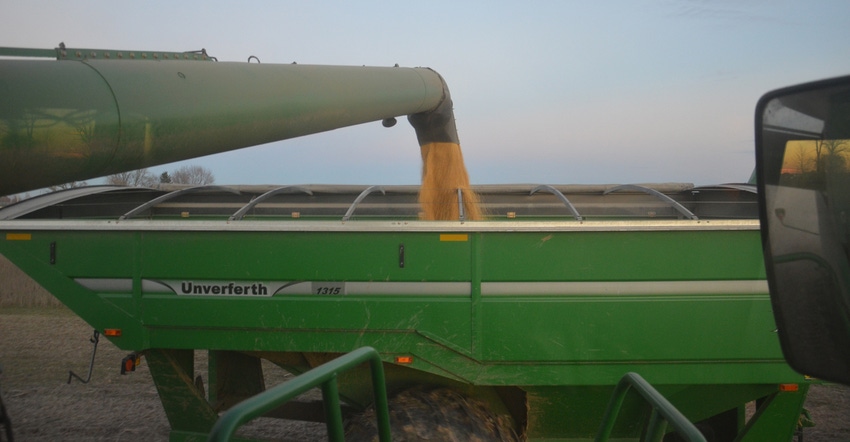
You probably couldn’t draw up a worse scenario for producing top soybean yields than what happened to the Soybean Watch ’17 field this year. The idea was to scout and watch the field all year and use it to illustrate problems that might happen in any farmer’s fields. There certainly were hiccups along the way in this field.
When the combine finally ran the day after Thanksgiving, after weeks of delay due to rainy weather, the 100-acre field yielded 50.4 bushels per acre. Considering the circumstances, Steve Gauck, a Beck’s sales agronomist based near Greensburg, Ind., says that’s a reasonable yield. Beck’s sponsored Soybean Watch ’17.
Gauck scouted the field about every two weeks from late June through mid-October. Here are key facts about the field.
• Late planting. Wet soils caused by heavy rains delayed planting. The field was finally no-tilled into cornstalks on June 6. Parts of the field are naturally wet, and other areas are somewhat poorly drained. Only a minimal portion of the field experiences better drainage.
• Slugs. When Gauck visited during the last few days of June, slugs were active in the field. “They were in many fields, not just this one,” he says. “You couldn’t tell unless you scouted the field. Many people had them but didn’t know it. Several fields were replanted in south-central Indiana, some more than once.”
Slugs persisted much longer than usual last spring, Gauck adds. Once slugs are in the field, there is little that can be done other than to replant if stands are thinned to very low levels.
• Stand counts. Gauck determined that even where slugs were most active, the remaining stand was about 82,000 plants per acre. “I will leave a stand with 80,000 plants without worrying about it,” he says. “The beans will compensate and branch out more where stands are thinner. We noticed that here later in the season.”
• Heavy rain. Early July brought a 6-plus-inch rain in one day. Some areas were ponded, and some beans never recovered. The combine operator reported that the damage caused by water viewed from the combine cab at harvest extended farther into the field than it looked like just walking the field. Even where plants survived the water, yields were affected.
• Late spraying. That same major rain event also delayed the postemergence spray application. “[The farmer] got good weed control, but in a few places thistles had already affected plants,” Gauck says. “The spray application did a really good job of burning off thistles, and there was only minimal bronzing on leaves. It likely didn’t affect yield.”
• Multiple varieties. Most of the field was planted to one variety, but three other varieties were tested. But when harvest falls after Thanksgiving, the objective becomes getting the crop out and not worrying about comparing yields, Gauck says.
From the combine cab and by watching the yield monitor, it appeared one of the new tested varieties excelled by 4 to 5 bushels per acre, but there was certainly no way to prove any difference.
“After a season like this, you take your 50 bushels per acre and call it good,” Gauck concludes.
About the Author(s)
You May Also Like




